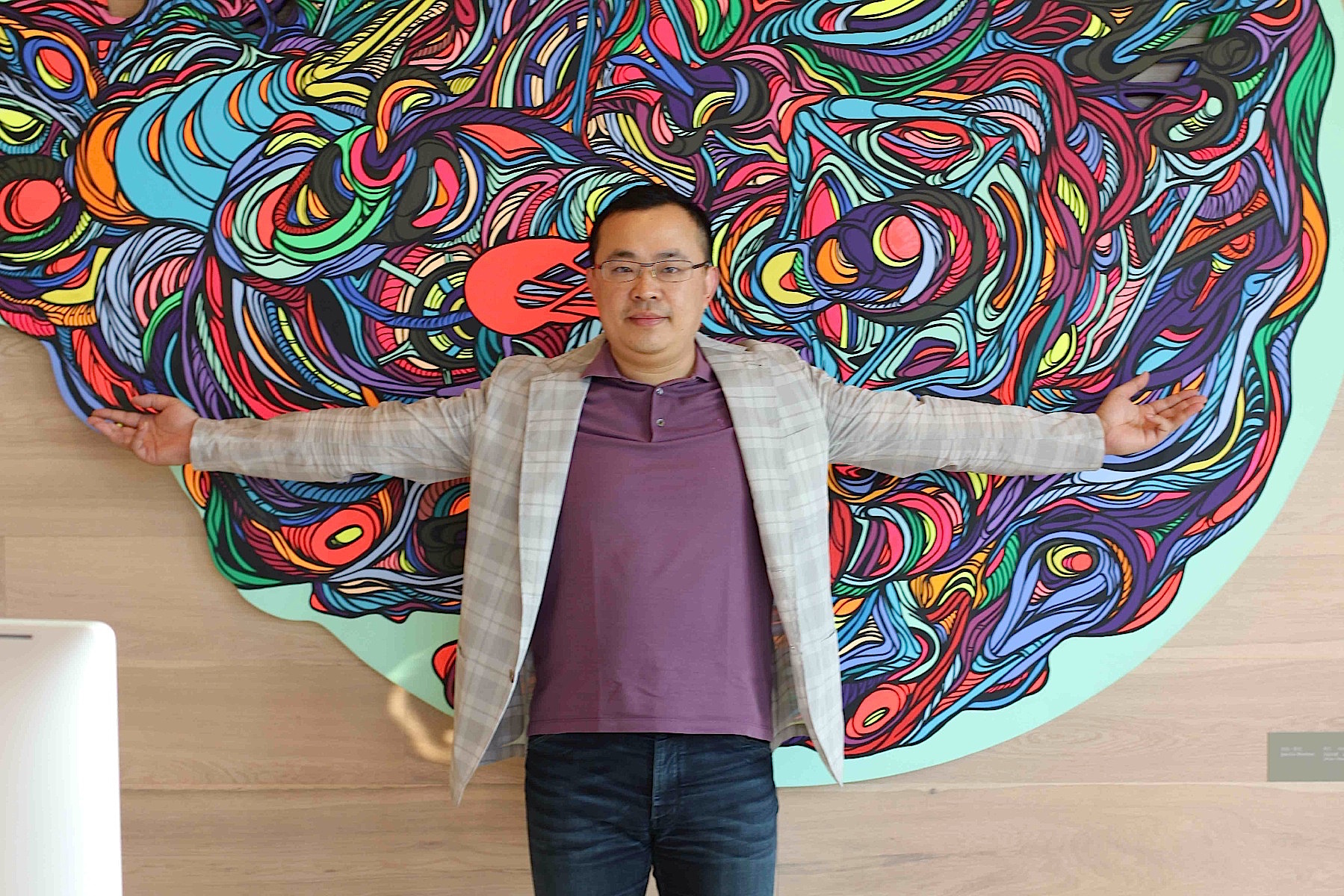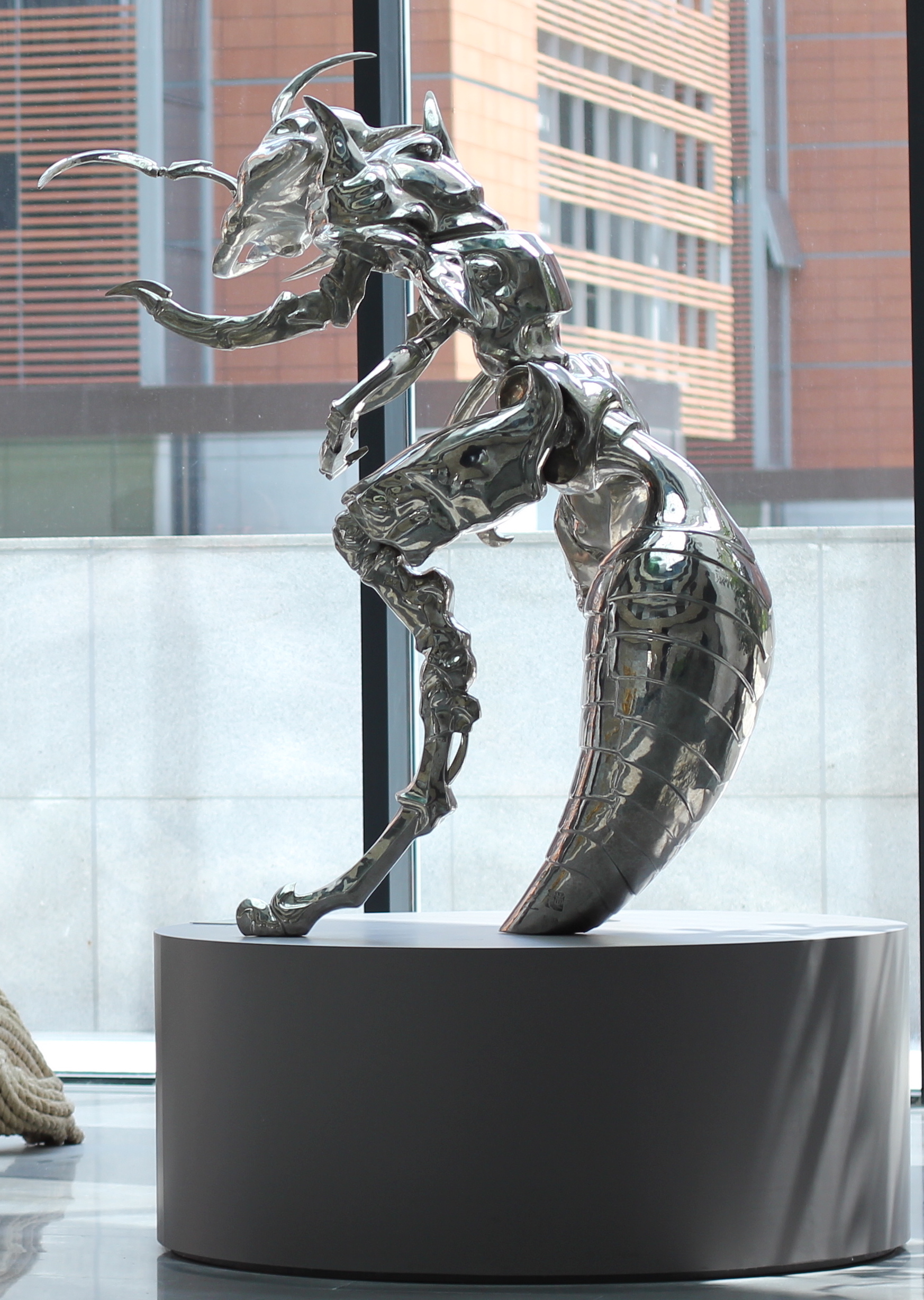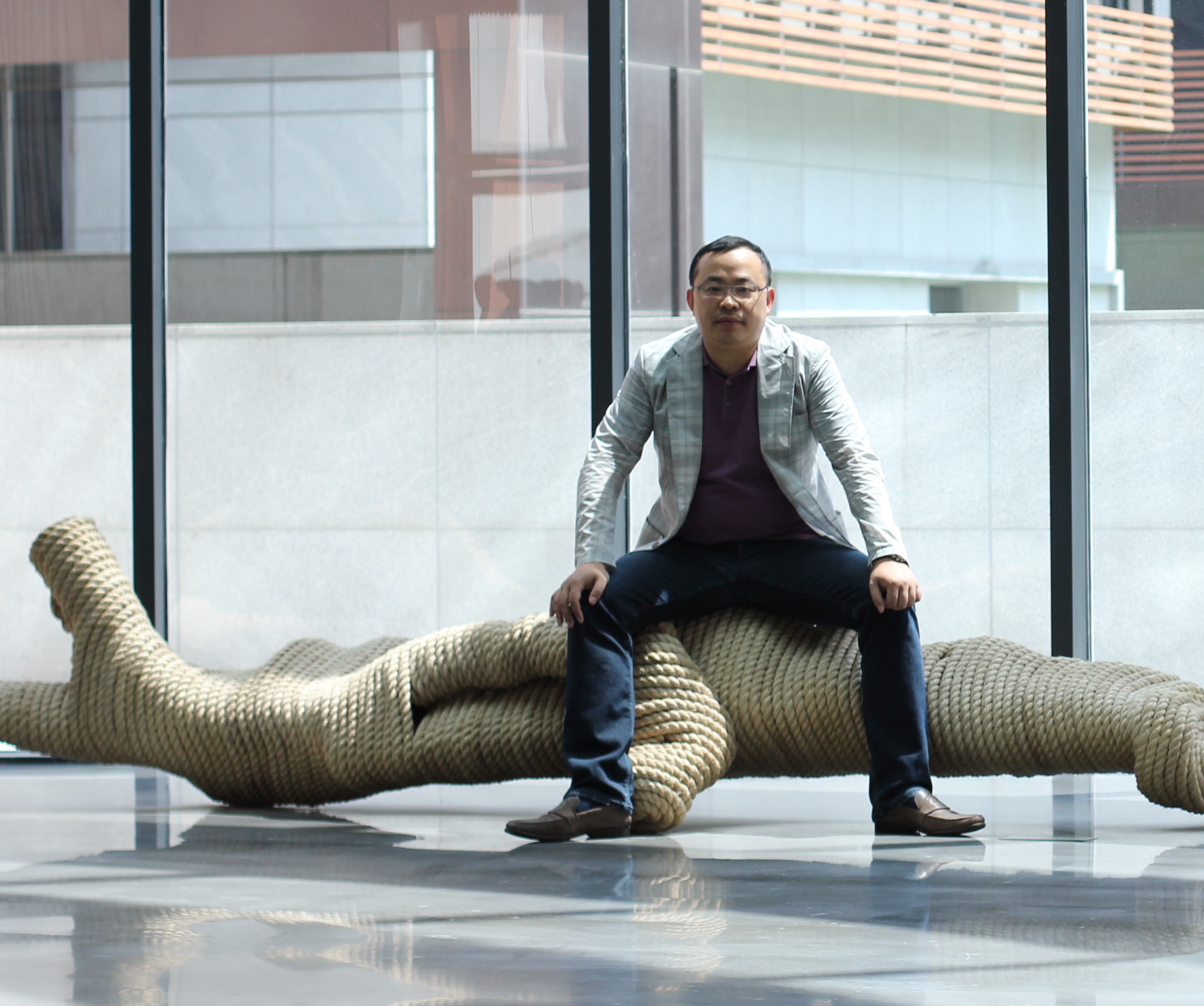Owning a collection is individual wealth but sharing art is wealth to society.
Your collection includes Chinese contemporary artists. When did you start collecting and did you start with contemporary art?
I bought my first piece of artwork in 1999, and I started to collect contemporary art since 2004. At the beginning I was focused by what my five star hotel needed. I wanted it to have an arty atmosphere. My passion for art took essence while studying design at university. I think this also motivated me to collect artwork.
What is your focus regarding the artists in your collection? Are you more interested in emerging or renowned artists? What is the reason?
What interests me is an artist’s unique sense of creativity and talent .Even though I value work from established artists more, I do also provide continual support towards young and emerging artists.
The How Art Museum’s collection has been built upon a range of different styles and genres. For instance, there is my “oriental collection” which includes the representational Zao Wou-Ki, Teh Chun Chu, Wu Guanzhong, Chen Yifei, Zhou Chunya and the “Book from the Ground” project from Xu Bing. I have a significant collection of contemporary Chinese ink, which holds Wenda Gu, Zhang Yu and Qiu Deshu. In terms of Contemporary Chinese art I have Zhang Xiaogang, Zhang Huan and Liu Xiaodong. My Asian contemporary art collection comprises of Yayoi Kusama, Takashi Murakami, and Chun Kwang Young. Finally, regarding Western artists, I have 370 works and archives from Joseph Beuys as well as works by Damien Hirst.
Can you name three emerging Chinese artists who are on your watchlist?
Lu Lei, Jin Yangping and Liu Wentao. They are all very expressive and show profound thought.
How do you choose the artworks you are buying? Do you work with art advisors? Are you actively in contact with galleries and artists?
First and foremost I would look into the content and quality of the work, then follow my own intuition and experience. I usually investigate with my art consultant. I also frequently visit important galleries, art fairs and auction houses.
Collecting and investing require good judgment on the future developments of the artist, the understanding of intrinsic value of arts and culture, and true comprehension of the meanings of art.
Since 2005, I started to pay attention to Zao Wou-Ki and Zhou Chunya, as there is both essence of Chinese culture and expressive characteristics from the West in their works. I don’t like to equalise the price tag and the artistic value.
The prices for Chinese contemporary artists exploded during the last ten years. What do you think about this development?
There is indeed a bit of a market bubble, which mostly concerns the prices of young artists. It takes time for the market to nurture artists, especially for contemporary artists. We need to look at the creative process and career development of the artists. We mustn’t favour marketing value over artistic value and over emphasise on the form and appearance of the works.
Zeng Fanzhi’s work The Last Supper was sold for US$23.3 million this October, setting a new auction record for contemporary Asian art. Are these prices justifiable? Do you think there is still room for growth?
The market gets to decide if the price is reasonable. Personally, I am pleased to see works from Chinese artists becoming indispensable in the field of international auctions. Zeng Fanzhi’s Xiehe Hospital was sold over a hundred million RMB (over 10 million Euro), which reaffirmed his international status.
Chinese collectors focus mainly on Chinese artists. Recently, you supported German Artist Joseph Beuys by exhibiting his works (at the CAFA Museum in Beijing). Why are you interested in him and his works? Is Beuys’s work being collected extensively in China? And is he famous?
Beuys’ artistic practice as well as his “everyone is an artist” concept had great significance at the time and represented new forms of social and political culture in European societies. This displayed his position and identity in human history as a great artist. He had an extensive international impact and influenced a large number of contemporary Chinese artists.
The record attendance of nearly 3,000 people at the opening reception of Beuys’s Social Sculpture exhibition, organised by How Art Museum, demonstrates the sufficient enthusiasm for Beuys from the Chinese art scene.
Our study shows that European collectors tend to collect more international works. Why do Chinese collectors focus mainly on Chinese artists?
This phenomenon is gradually changing. A lot of Chinese collectors have started to collect international artists because, in recent years, collectors have started to collect Western masters such as Picasso, Monet, Richter and Andy Warhol. This signifies that their focus and interest are shifting. Additionally, high importing taxes in China limit the process of internationalization of collections in China. However, the establishment of the Shanghai Free-Trade Zone will significantly change the collection ecology in China. I am confident about it.
The Art Basel HK was recently established and presents galleries from the whole of Asia as well as Western galleries. Do you think that art fairs like the Art Basel HK will lead to a change in the way Asian collectors are collecting in general?
Art Basel Hong Kong indeed brought “fresh blood”, which had a strong impact on Asian collectors. We are going to see Asian collectors collecting Western art more often.
You are not the only collector in China opening a new private exhibition space, e.g. Budi Tek is opening his YUZ Museum in Shanghai in 2014. Do you see a trend of presenting private collections to the public in China?
This is a trend in China. Collectors becoming founders of museums is a necessary development. International art museums will bring artistic vitality to the city. Owning a collection is individual wealth but sharing art is wealth to society. “To own a private collection is personal joy; to show a private collection is a shared joy.” How Art Museum will showcase its collection to the general public, contributing to public education and exhibition landscape in the future. Collectors are custodians of art, but works of art belongs to all of mankind!








